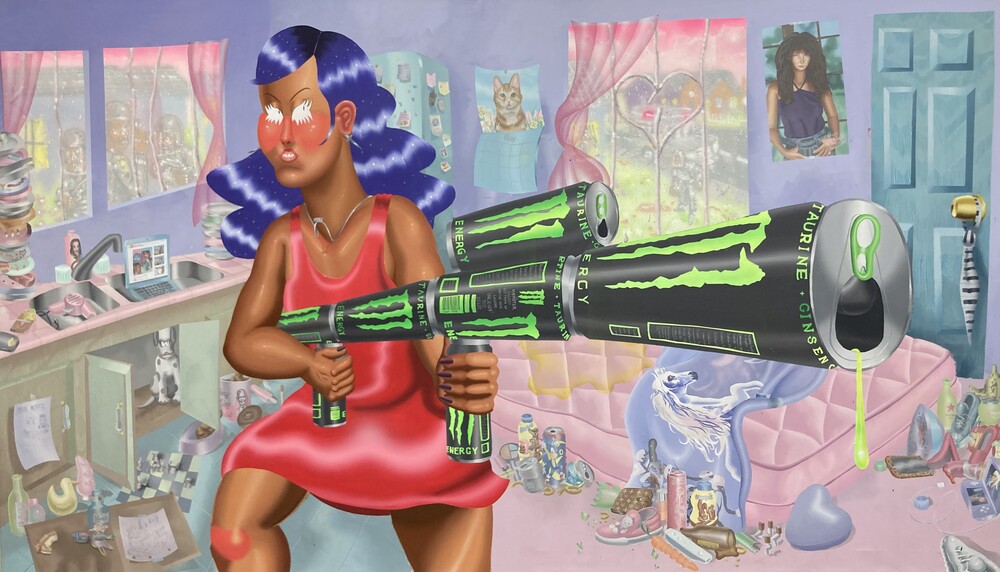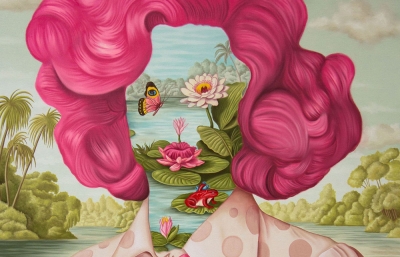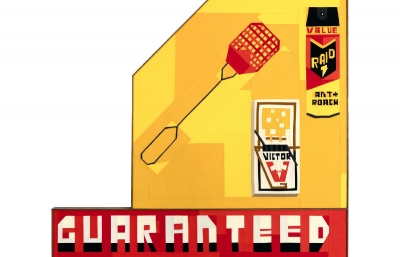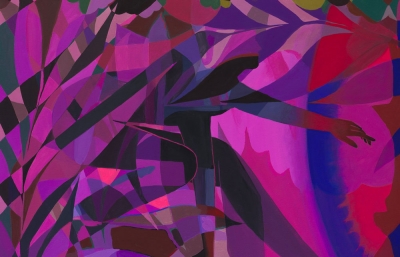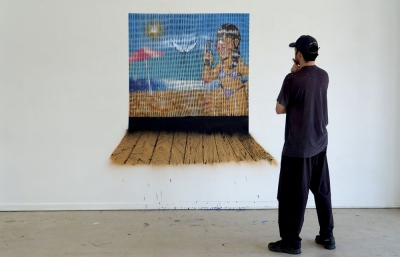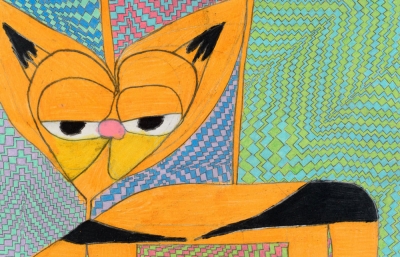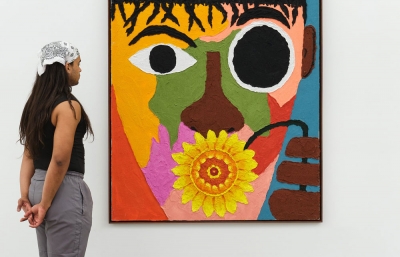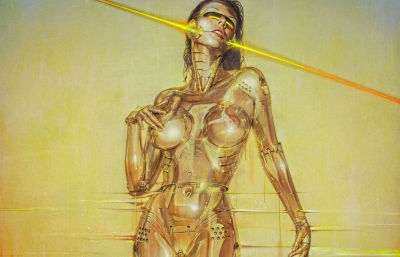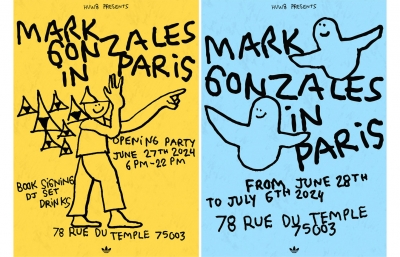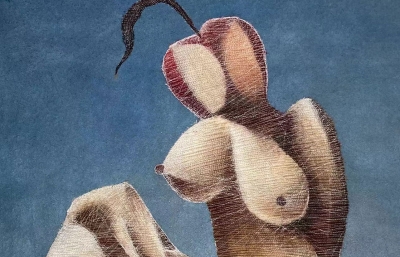Of course we are excited about our own I'd Love To See You, A Juxtapoz Magazine Story, Part 1 opening at Rusha & Co on Saturday, June 29th, but we are so lucky that the night before our friend Isaac Psalm Escoto a.k.a Sickid will open the highly-anticipated Gas Station Dinner at Jeffrey Deitch Gallery in Los Angeles. A great weekend in LA. Read the press release, below.
Driving along the 101 through Echo Park, I was stunned by a strategically positioned graffitied billboard that looked like nothing I had ever seen. I nearly ran off the road. It was a vivid constellation of candy-colored cartoon-like figures that evoked the signage and packaging in gas station convenience stores. At the bottom of the billboard takeover was the intriguing signature: Sickid.
I began seeing other Sickid interventions.There was another remarkable billboard on Santa Monica Boulevard in East Hollywood. I asked around and was told that Sickid already had a gigantic following. I had to meet him. It is rare in the world of street art that an artist invents a new vision.
As part of the preparation for our At the Edge of the Sun exhibition, I visited artist Ozzie Juarez at his Tlaloc Studios in South Los Angeles, where he maintains a neighborhood-oriented exhibition space and residency program. Ozzie was showing me through the studios when we entered a space packed with paintings filled with the same distinctive figures from the renegade billboards that I admired. “This is Isaac,” Ozzie said, introducing me to the artist who was busy painting. “Are you Sickid?” I asked. Yes, Isaac Psalm Escoto was the serious young painter who was also reinventing Los Angeles street art. The paintings were just as exciting and original as the billboards, only smaller and more detailed and refined. On the spot, I invited Isaac to present a gallery exhibition.
Isaac’s exhibition title was inspired by his years of “living off gas station food.” His Los Angeles is not about light and space and L.A. Noire. Isaac’s artistic vision reflects the Los Angeles of fast food, liquor stores, and dirty bedrooms. His visual vocabulary is also shaped by comic book culture and video game animation. Isaac is a first-generation American, growing up in East Hollywood, the child of Guatemalan and Mexican immigrants. His mother was interested in culture and talked to him about Scorsese movies. His father was an athlete and a professional boxer. This unusual fusion of vanguard movies and Mexican boxing helped lead to the combination of athleticism, daring, and artistic expression that spawned what he refers to as his “billboard practice.” I asked Isaac if the legend was true that when he was fourteen years old, his mother would drive him to his billboard sites, wait for him in the car while he painted, and then drive him back home. Yes, it was true: his family’s version of supporting their son’s artistic aspirations.
Isaac attended Catholic school grades K – 8, and then the Ramon C. Cortines School of Visual and Performing Arts. The high school was close to Chinatown, Echo Park and downtown, allowing him to immerse himself in gritty urban culture. He would regularly ditch classes to paint on the street. He wanted to stay in Los Angeles after high school and enrolled at the Art Center College of Design. After two and a half semesters there and in debt, he realized that his artistic career would advance more by getting out and painting, rather than staying in class. He wanted to live the graffiti life. He says that if he had stayed at Art Center, he never would have done “the risky stuff.” In the shadows, he began an entirely new chapter in the history of street art.
Isaac also began a studio practice, but for a long time his studio was a walk-in closet in his mother’s house. His makeshift studio could only fit one painting at a time, but out of that studio, he created three solo exhibitions. Now that Ozzie has allowed him to have a proper studio, Isaac can more fully realize his artistic vision. In contrast to his billboard practice, where he strives for legibility and speed, the studio paintings have much more detail and depth. Their compositions are like digital collages but unlike the work of many artists today who compose their work on the computer and print out the result, Isaac’s work is meticulously hand-painted. The viewer can get lost in the detailed backgrounds. The work has an inner luminosity that evokes the plastic signs in fast food restaurants backlit by fluorescent tubes. Isaac’s technique displays a mastery of both the airbrush and the painter’s brush. Rather than painting in uniform colors, the geometric sections of his compositions are perfectly rendered gradients. The colors in his paintings are not those found in nature – they are the colors one would find in convenience stores.
In his work on the street and in the studio, Isaac Psalm Escoto has created a skewed aesthetic world that mirrors his daily immersion in the confused reality of vernacular Los Angeles where the artificial and the real are conflated. We are excited to present the work of one of the freshest and most original artists to have taken on and taken over Los Angeles. –Jeffrey Deitch



